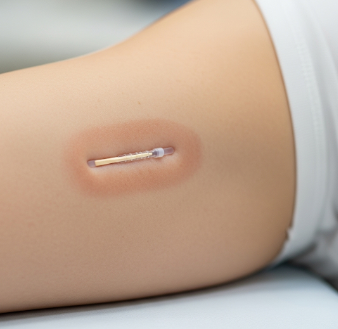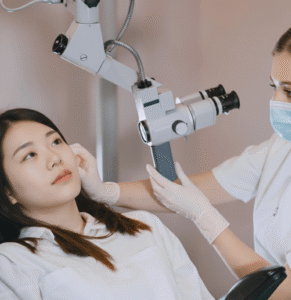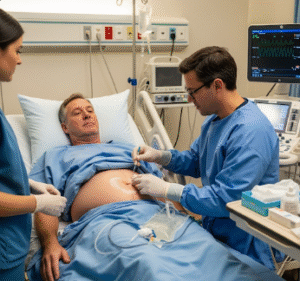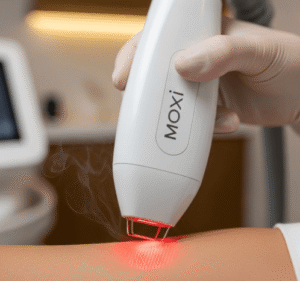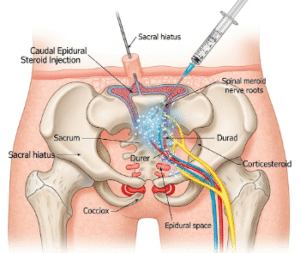Overview
Contraceptive implants are small, flexible rods inserted under the skin of the upper arm that release a hormone (usually progestin) to prevent pregnancy. They are a form of long-acting reversible contraception (LARC), providing protection for 3–5 years, depending on the type.
Importance of contraceptive implants:
- Highly effective pregnancy prevention (>99% efficacy).
- Long-acting yet reversible, allowing rapid return of fertility after removal.
- Non-daily method, ideal for women seeking minimal maintenance.
- Can regulate menstrual cycles and reduce menstrual pain for some users.
In South Korea, contraceptive implants are available in select gynecology clinics and hospitals, with trained professionals performing insertion and removal procedures.
Why It’s Done
Contraceptive implants are used for effective, long-term pregnancy prevention and can also offer additional health benefits.
Common indications include:
- ➤ Long-term contraception without daily or monthly attention.
- ➤ Women who cannot use estrogen-containing contraceptives (due to cardiovascular risks or migraines with aura).
- ➤ Irregular or heavy menstrual bleeding, in some cases.
- ➤ Patients seeking reversible yet highly effective birth control.
- ➤ Young women or those with compliance challenges using pills or barrier methods.
Benefits for users:
- ✔️ >99% effectiveness for the duration of use.
- ✔️ Reversible with rapid return of fertility after removal.
- ✔️ Convenient and discreet, requiring minimal daily attention.
- ✔️ Reduces risk of unplanned pregnancies, improving reproductive autonomy.
Alternatives
While contraceptive implants are highly effective, alternatives include:
- ➤ Other hormonal LARCs: Hormonal IUDs providing long-term contraception.
- ➤ Barrier methods: Condoms or diaphragms, effective for pregnancy prevention and STI protection.
- ➤ Oral contraceptives: Daily pills (combined or progestin-only).
- ➤ Contraceptive injections: Administered every 1–3 months.
- ➤ Permanent methods: Tubal ligation for women or vasectomy for men.
- ➤ Fertility awareness methods: Calendar tracking, basal body temperature, cervical mucus monitoring.
Key point: Implants are ideal for long-term, low-maintenance contraception, particularly when daily adherence is a challenge.
Preparation
Proper preparation ensures safe insertion, minimal complications, and patient understanding.
Steps include:
- ✅ Medical consultation: Review medical history, allergies, hormone contraindications, and menstrual pattern.
- ✅ Patient education: Discuss insertion procedure, side effects, expected bleeding changes, and removal.
- ✅ Informed consent: Confirm understanding of risks, benefits, and alternatives.
- ✅ Site preparation: Upper arm site marked and cleaned before insertion.
- ✅ Pain management: Local anesthesia applied at the insertion site.
Important: Preparation ensures effective contraception, safe procedure, and informed decision-making.
How It’s Done
The contraceptive implant is a minor outpatient procedure, usually completed within 15–20 minutes.
Procedure steps:
- Site selection and sterilization: Upper inner arm is cleaned with antiseptic.
- Local anesthesia: Numbs the insertion site.
- Insertion: A small applicator introduces the implant under the skin.
- Verification: Palpate the implant to ensure correct placement.
- Dressing: Small bandage applied; patient advised to avoid heavy lifting or pressure for 24 hours.
Removal:
- Done similarly under local anesthesia.
- Small incision made over the implant; rod gently withdrawn.
Duration: Provides protection for 3–5 years, depending on brand.
Hospital stay: Not required; outpatient procedure with minimal downtime.
Key point: Contraceptive implants are quick, safe, and effective, requiring minimal intervention during use.
Recovery & Post-Use Care
Recovery is generally rapid, with minor care needed at the insertion site.
Immediate care:
- Monitor for bruising, swelling, or mild discomfort.
- Keep the site clean and dry for 24 hours.
- Avoid heavy lifting or strenuous activity initially.
Short-term care:
- Track menstrual changes; irregular bleeding is common in the first 3–6 months.
- Watch for signs of infection: Redness, pus, or increasing pain.
Long-term outcomes:
- Provides continuous pregnancy prevention for years.
- Menstrual patterns usually normalize after removal, and fertility returns rapidly.
- Side effects may include irregular bleeding, headaches, or mild breast tenderness.
Important: Follow-up visit is recommended 1–3 months post-insertion to check site and address concerns.
Possible Complications / Risks
Contraceptive implants are safe but may have minor complications:
- ⚠️ Insertion site complications: Bruising, swelling, infection, or pain.
- ⚠️ Irregular bleeding: Spotting, prolonged bleeding, or amenorrhea.
- ⚠️ Hormonal side effects: Headaches, acne, mood changes, breast tenderness.
- ⚠️ Rare complications: Implant migration or difficult removal.
- ⚠️ Allergic reactions: Rare, usually to local anesthesia or implant materials.
In South Korea, implants are administered by trained gynecologists in clinics or hospitals, ensuring minimal risk and adherence to safety protocols.
Treatment Options / Clinical Relevance in Korea
Contraceptive implants are part of modern reproductive health services in South Korea, particularly for women seeking long-term, reversible contraception.
Key features:
- 🏥 Available in gynecology clinics and hospital outpatient departments.
- 🏥 Trained professionals handle insertion, removal, and counseling.
- 🏥 Part of family planning programs supported by healthcare providers.
- 🏥 Suitable for women who cannot take estrogen-containing contraceptives.
- 🏥 Integrated with sexual health education, ensuring informed choice and safe use.
Highlights in Korea:
- ✔️ Long-acting, reversible, and highly effective contraception.
- ✔️ Minimal maintenance, convenient for working women or students.
- ✔️ Adverse effects are monitored and managed by healthcare professionals.
- ✔️ Promotes reproductive autonomy and planned pregnancies.
- ✔️ Provides rapid return of fertility after removal.
Highlights
- ➤ Contraceptive implants are small rods inserted under the skin for long-term pregnancy prevention.
- ➤ Indicated for women seeking long-acting, reversible, low-maintenance contraception or those who cannot use estrogen-containing methods.
- ➤ Alternatives include pills, injections, IUDs, barrier methods, permanent sterilization, or fertility awareness methods.
- ➤ Preparation involves medical consultation, patient education, consent, and site preparation.
- ➤ Insertion is an outpatient procedure under local anesthesia, lasting 15–20 minutes.
- ➤ Recovery is rapid; minor site care and follow-up are required.
- ➤ South Korea offers professional insertion and removal services with safe, regulated access and patient education.

